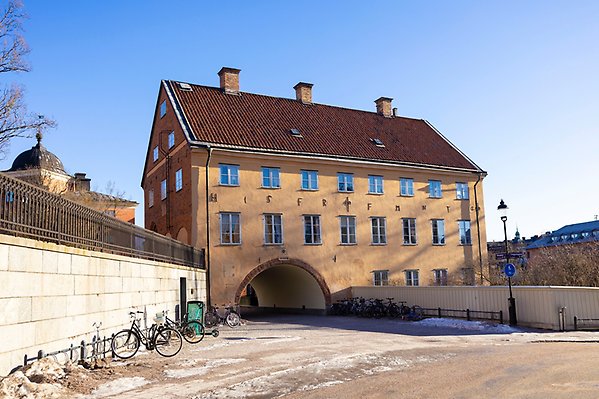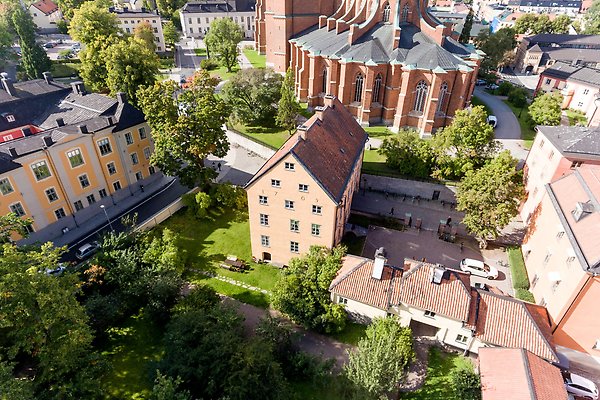History of Skytteanum
These days, Uppsala University does not provide accommodation for professors or other employees. With one exception – Skytteanum. This building, southeast of the Cathedral and easily recognised by its distinctive semicircular archway, is still the residence of the Johan Skytte Professor of Eloquence and Government.

Skytteanum. Photo: Mikael Wallerstedt
The building and the chair are named after Johan Skytte, born in 1577. He was the son of a burgher who studied in Germany and was later appointed to tutor Prince Gustav II Adolf. He took the name Skytte after being made a nobleman.
Skytte attained the highest position in the land, Councillor of the Realm, in 1617, and in 1622 he was appointed Chancellor of Uppsala University. He is probably best known for establishing and endowing the professorial chair in 1622. He also prescribed in detail exactly how the holder of the chair should carry out his teaching duties.
The building now known as Skytteanum dates from the 14th century. Skytte purchased the building and decided to make it the residence of the Skytte Professor. It was originally rather dilapidated but following renovation, in 1626 the first professor was able to move in.
On the facade large iron letters are visible, which are actually decorative anchor plates for reinforcing the building. The letters are: H I S F R and F M N T G. Over the years students have come up with many humorous interpretations of the initials, but what they really stand for is: Herr Johan Skytte Friherre Riksråd and Fru Maria Nääf Till Grönsöö (Mr Johan Skytte, Baron, Councillor of the Realm, and Mrs Maria Nääf Till Grönsöö, who was Skytte’s wife).
Skytte had stipulated that the holder of the chair must be appointed by him as the patronus and that this right should be passed on to his descendants. This patronage survives to the present day, and the current heir has the right to state their opinion when a new holder is appointed to the chair.
Apart from this, the appointment is made in the same way as other professorships. The position is advertised and the shortlisted applicants give public trial lectures that are assessed by three experts – two in political science and one in eloquence.
The Skytteanum is thus the residence of the professor, and also comprises premises for research and teaching in political science, two small buildings and a large garden. The Skytte Chair is considered the oldest professorship in political science in the world, and the building, with its garden, is a quaint feature of the academic milieu in Uppsala.

The garden of Skytteanum is open to the public at certain hours on weekdays. Photo: Mikael Wallerstedt
